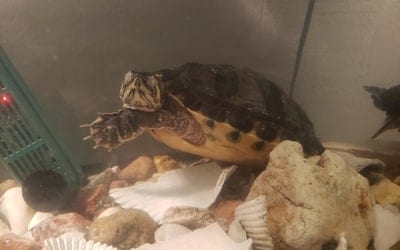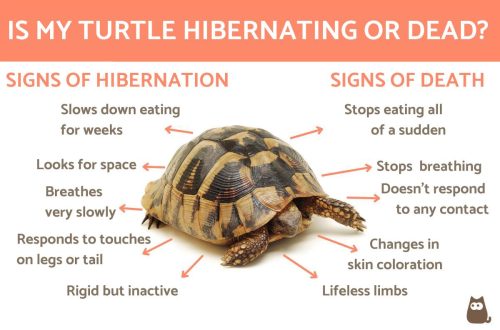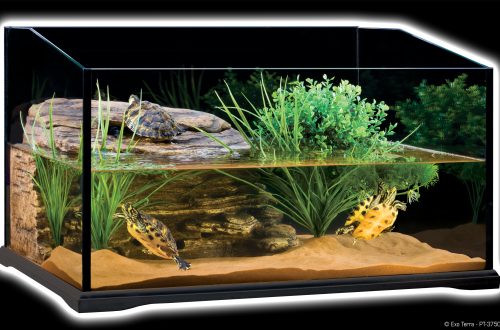
The turtle sleeps and does not come out of hibernation
With a properly conducted hibernation (see the article Organization of hibernation of turtles), turtles quickly return to an active state after turning on the heating, and within a few days they begin to feed. However, living in an apartment, turtles often hibernate “under the battery” every winter, that is, without the necessary preparation and organization. At the same time, uric acid continues to be synthesized in the excretory system (it looks like white crystals), which gradually destroys the kidneys. This is fraught with the fact that after several such winterings, the kidneys are severely destroyed, kidney failure develops. Based on this, if you have not prepared the animal properly, it is better not to let the turtle hibernate at all.
In order to try to “wake up” the pet, it is necessary to turn on both the heating lamp and the ultraviolet lamp in the terrarium for the whole daylight hours. It is important to give the turtle daily baths with warm water (32–34 degrees) for 40–60 minutes. This measure helps to increase activity, slightly compensate for dehydration, and facilitates the passage of urine and feces.
If within one or two weeks the turtle has not begun to eat, its activity is reduced, there is no urine output, or any other alarming symptoms appear, you need to show the turtle to a specialist. Along with dehydration and kidney failure, hibernation can lead to liver disease and gout.
Renal insufficiency manifests itself in the form of clinical signs already in the later stages with significant irreversible destruction of the kidneys. Usually, this is expressed in swelling of the limbs (especially the hind limbs), softening of the shell (signs of “rickets”), liquid mixed with blood accumulates under the plates of the lower shell.
To prescribe treatment, it is better to consult a herpetologist, since attempts to treat a picture similar to rickets with additional injections of calcium often lead to death. Despite the softening of the shell, calcium in the blood is increased. Therefore, it is important to take blood tests before treatment. It is also important to monitor the presence of urine, and if necessary, drain it with a catheter. For treatment, Allopurinol, Dexafort are prescribed, in the presence of hemorrhages – Dicinon, to combat hypovitaminosis – the Eleovit vitamin complex, and to compensate for dehydration Ringer-Locke. The doctor may prescribe other drugs in addition after the examination.
Also, with renal failure, uric acid salts can be deposited not only in the kidneys, but also in other organs, as well as in the joints. This disease is called gout. With the articular form, the joints of the limbs increase, swell, it is difficult for the turtle to move. When there are already clinical signs of the disease, treatment is rarely effective.
As they say, the disease is easier to prevent than to cure. And this is the best fit for reptiles. Diseases such as kidney and liver failure, gout in the later stages, when clinical signs appear, and the turtle feels very bad, usually, unfortunately, are almost not treated.
And your task in the first place is to prevent this by creating the necessary conditions for keeping and feeding. Taking full responsibility for the pet, “for those who have been tamed.”





